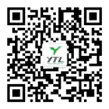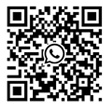History of the development of electric energy meters
Since Faraday discovered the law of electromagnetic induction in the nineteenth century, with the development and maturity of the application and technology of electric energy in production and life, electric energy has become a universal energy in contemporary society. In today's information age, large computers with large computing power and small smartphones that integrate communication and entertainment are inseparable from the use of electrical energy. It can be said that electrical energy has become the lifeblood of society. But unlike energy sources such as oil, steam, and natural gas, electricity is invisible and intangible, so how to solve the measurement of electrical energy? So there are different principles and different working methods of electric energy meters.
Since electric energy was the direct current used when it was first put into production, in 1880 Edison invented the first DC electric energy meter (ampere-hour meter) using the principle of electrolysis. However, due to the age, it is impossible to verify the specific model of the DC electric energy meter invented by Edison, nor to know how the principle of electrolysis measures electric energy.
With the acceleration of industrial development, when direct current cannot meet the market demand, alternating current appears immediately. The discovery and application of alternating current has put forward new requirements for electric energy meters. In 1889, Brettel made the world's first inductive energy meter with a total weight of 36.5kg. The working principle is very simple: when the electric energy meter is connected to the circuit under test, there is an alternating current in the current coil and the voltage coil, and the alternating current generates an alternating magnetic flux in the iron core; The magnetic flux passes through the aluminum disk, and an eddy current is induced in the aluminum disk. The eddy current is then subjected to a force in the magnetic field, so that the aluminum disk rotates. When the aluminum disk is transferred, the counter is driven to indicate the power consumption.
In the continuous improvement, the method of improving the non-working magnetic circuit to 90 degrees was added in 1905, which greatly improved the parameters of the electric energy meter. Subsequently, the appearance of high-permeability materials with better performance greatly reduced the weight and volume of the energy meter. Inductive energy meters have been widely used in electric energy measurement due to their simple structure, low cost, and easy maintenance. However, their own shortcomings cannot be solved well: low accuracy, manpower consumption, and poor protection against electricity tamper, etc.
At the end of the 1960s, Japan invented the time division multiplier and proposed its principle of measuring power, realizing a fully electronic measurement device. The electronic energy meter involves the conversion of digital electricity and analog electricity. Its working principle is more complicated: the measured voltage and current are sent to the multiplier after conversion by the converter. The multiplier completes the multiplication of the instantaneous value of voltage and current, and outputs a The DC voltage U proportional to the average power over a period of time, and then using the relationship of U, the voltage is converted into a signal representing the frequency for display.
Nowadays, with the construction of the global "smart grid" and the State Grid Corporation's "electricity consumer power information collection system", the energy meter no longer exists as a single billing instrument, but is becoming more intelligent, systematic, modular and diversified system terminal development.
Smart meter is a brand-new electronic energy meter with functions such as electric energy measurement, information storage, real-time monitoring, automatic control, information interaction, etc. It supports two-way measurement, tariff electricity price, time-sharing electricity price, peak-valley electricity price and other actual needs. The automatic meter reading system and the load control system are gradually merged and upgraded into a power collection system, and the transition to an advanced measurement system has become one of the most promising electrical instrumentation products.
Therefore, it is foreseeable that the development of electric energy meters will definitely take intelligence as the ultimate goal and become a system terminal covering different intelligent power grids around the world.

 English
English 简体中文
简体中文







.png?imageView2/2/w/500/h/500/format/png/q/100)
.png?imageView2/2/w/500/h/500/format/png/q/100)
.png?imageView2/2/w/500/h/500/format/png/q/100)




